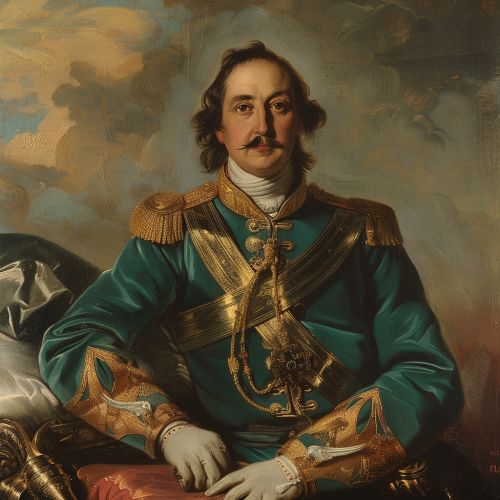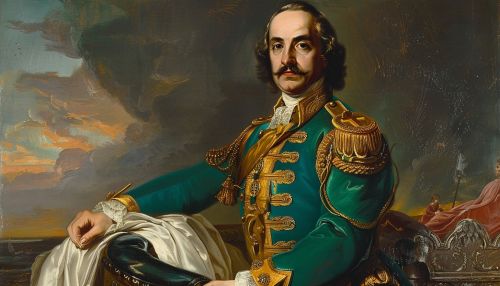History of science and technology in Russia
Early Developments
The history of science and technology in Russia is a rich and complex tapestry, woven from the contributions of numerous scientists, engineers, and inventors over the centuries. The roots of scientific inquiry in Russia can be traced back to the early medieval period, where the foundations of knowledge were laid by scholars and monks in monasteries.
Kievan Rus' and Early Contributions
During the period of Kievan Rus', which lasted from the late 9th to the mid-13th century, the primary centers of learning were monasteries. Monks engaged in the study of religious texts, as well as the translation of Greek and Latin works into Old Church Slavonic. This period saw the introduction of the Cyrillic script, which facilitated the spread of literacy and learning.
The Mongol Invasion and Its Impact
The Mongol invasion in the 13th century disrupted the development of science and technology in Russia. The destruction of cities and the imposition of the Mongol yoke led to a period of stagnation. However, the Mongols also introduced new technologies and knowledge, such as advanced metallurgy and military tactics, which were gradually assimilated by the Russian principalities.
The Renaissance and the Rise of Russian Science
The Time of Troubles
The late 16th and early 17th centuries, known as the Time of Troubles, were marked by political instability and social upheaval. Despite these challenges, this period also saw the emergence of new scientific ideas and technological innovations. The establishment of the Moscow Print Yard in 1553 marked the beginning of book printing in Russia, which played a crucial role in disseminating knowledge.
Peter the Great and the Westernization of Russia
The reign of Peter the Great (1682-1725) was a turning point in the history of Russian science and technology. Peter's extensive travels in Western Europe exposed him to the latest scientific and technological advancements, which he sought to introduce to Russia. He founded the Russian Academy of Sciences in 1724, which became a leading center for scientific research.


Peter's reforms extended to various fields, including shipbuilding, metallurgy, and engineering. He established the Saint Petersburg State University and the Kunstkamera, Russia's first museum, which housed a vast collection of scientific specimens and artifacts.
The 18th and 19th Centuries
The Enlightenment and the Expansion of Scientific Knowledge
The 18th century, known as the Age of Enlightenment, was a period of significant scientific progress in Russia. The Russian Academy of Sciences played a pivotal role in advancing knowledge in fields such as astronomy, mathematics, and natural sciences. Notable scientists of this era included Leonhard Euler, a Swiss mathematician who made substantial contributions to calculus and mechanics, and Mikhail Lomonosov, a polymath who made groundbreaking discoveries in chemistry and physics.
Industrialization and Technological Advancements
The 19th century was marked by rapid industrialization, which brought about significant technological advancements. The construction of the Trans-Siberian Railway between 1891 and 1916 was a monumental engineering feat that connected European Russia with the Far East. This period also saw the development of the telegraph and the introduction of electricity, which revolutionized communication and industry.
The Soviet Era
Early Soviet Period and the Push for Modernization
Following the Russian Revolution of 1917, the Soviet government prioritized the modernization of science and technology. The establishment of the State Committee for the Coordination of Scientific Research in 1925 aimed to centralize and coordinate scientific efforts. The Soviet Union made significant strides in various fields, including aviation, with the development of aircraft such as the Tupolev ANT-20, and space exploration, culminating in the launch of Sputnik 1 in 1957, the first artificial satellite to orbit the Earth.
World War II and Post-War Achievements
World War II had a profound impact on Soviet science and technology. The war effort spurred advancements in military technology, including the development of the T-34 tank and the Katyusha rocket launcher. In the post-war period, the Soviet Union emerged as a superpower, with significant achievements in nuclear technology, exemplified by the successful detonation of its first atomic bomb in 1949.
The Space Race
The Space Race between the Soviet Union and the United States was a defining aspect of the Cold War. The Soviet Union achieved several historic milestones, including the launch of Yuri Gagarin, the first human in space, aboard Vostok 1 in 1961. The Soviet space program also pioneered the development of space stations, with the launch of Salyut 1 in 1971.
Post-Soviet Era
Transition and Challenges
The dissolution of the Soviet Union in 1991 brought about significant challenges for Russian science and technology. The transition to a market economy led to funding cuts and brain drain, as many scientists and engineers emigrated in search of better opportunities. Despite these challenges, Russia continued to make notable contributions in fields such as space exploration, with the continued operation of the Mir space station until 2001 and participation in the International Space Station program.
Contemporary Developments
In recent years, Russia has sought to revitalize its scientific and technological sectors. The establishment of the Skolkovo Innovation Center in 2010 aims to foster innovation and entrepreneurship. Russia remains a key player in space exploration, with ongoing missions and collaborations with international space agencies.
